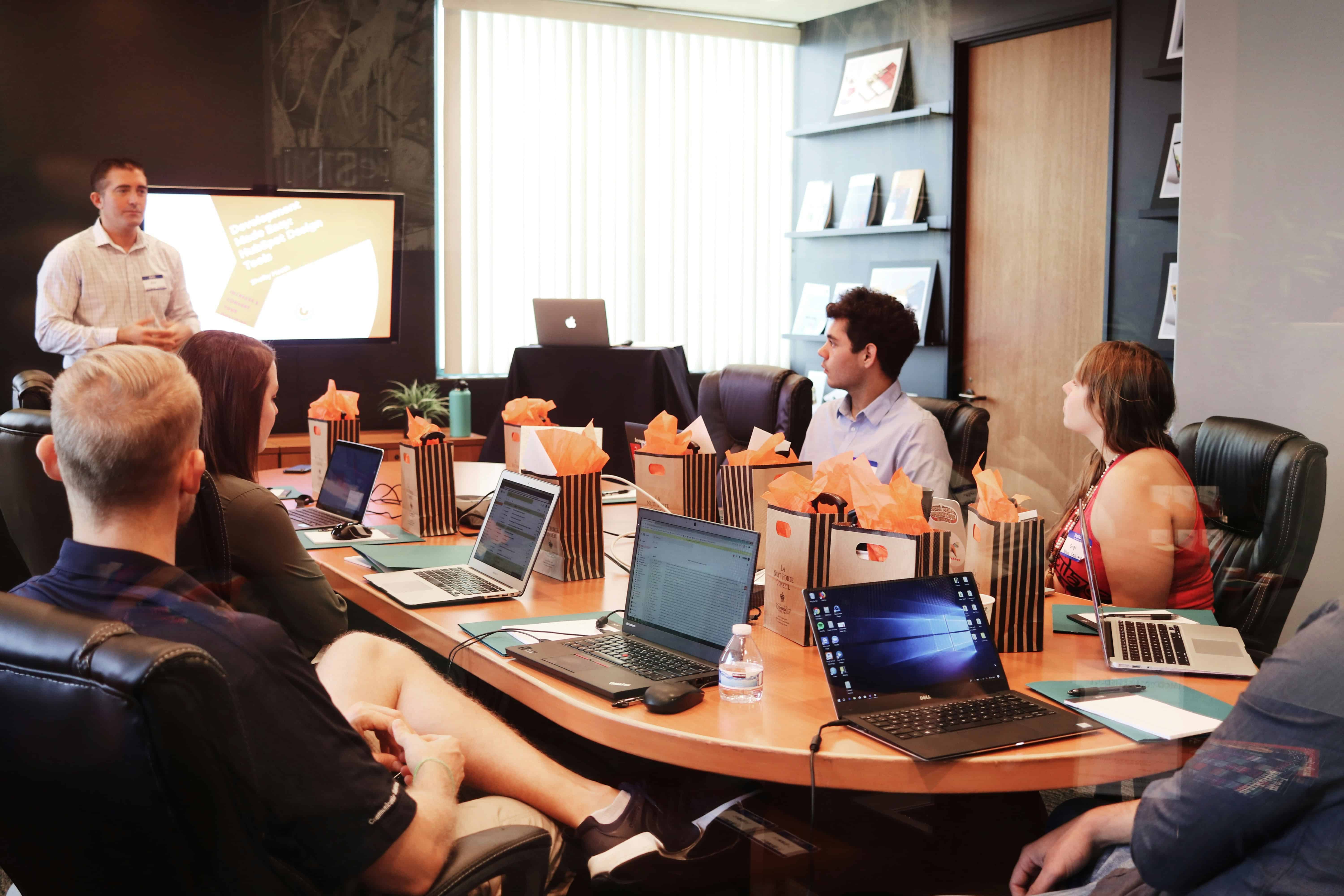Can Gen AI Redefine the Skills That Drive Associations Forward?

Generative AI (Gen AI) is revolutionizing industries, and associations are no exception. For professional associations, which rely on a mix of staff and volunteers to serve their members and model industry standards, the rise of Gen AI is both a challenge and an opportunity, with employees suffering from automation anxiety, the fear that their skills may become obsolete. It compels leaders to reconsider which skills are essential, which are becoming obsolete, and how to prepare their organizations—and their members—for a future shaped by AI.
Video: “Can Gen AI Redefine the Skills That Drive Associations Forward?”
Podcast: “Can Gen AI Redefine the Skills That Drive Associations Forward?”
This transformation is not about losing human value but about shifting focus. Gen AI is changing the nature of work, allowing associations to embrace new opportunities while discarding tasks that no longer require human effort. The key for association leaders is to understand and adapt to this paradigm shift, ensuring their organizations thrive in this new landscape.
How Can Gen AI Help Associations Lose Irrelevant Skills?
Association staff and volunteers spend significant time on repetitive, predictable tasks. These tasks include data entry, summarizing reports, drafting communications, and managing meeting schedules. Gen AI excels in these areas, offering faster, more accurate results. For instance, AI tools can generate polished emails tailored to members, summarize board meeting minutes in seconds, or automate event registration processes—tasks once dependent on human labor.
Content creation is also evolving. Where staff and volunteers once spent hours drafting newsletters, marketing copy, or training materials, AI systems like ChatGPT can now produce quality drafts in moments. This shift doesn’t eliminate the need for human involvement but changes its focus. Rather than generating content from scratch, staff and volunteers are increasingly becoming curators and refiners, ensuring outputs align with the association’s tone, ethics, and strategic goals.
The Skills That Are Gaining Importance
As Gen AI takes over routine and technical tasks, it creates room for staff and volunteers to focus on uniquely human skills. For professional associations, these skills are critical in maintaining trust, fostering relationships, and driving strategic initiatives that AI cannot replicate.
Emotional and social intelligence are at the forefront of this shift. Volunteers leading local chapters, for example, must navigate complex interpersonal dynamics to engage members, manage conflicts, and inspire action. These qualities—empathy, trust-building, and nuanced communication—cannot be automated.
Strategic thinking is also growing in importance. While AI can analyze data and suggest trends, it struggles to integrate these insights into complex, real-world contexts. Association leaders who can anticipate industry shifts, align decisions with long-term goals, and adapt to unforeseen challenges will remain indispensable.
Ethical judgment is another critical area. Associations, as standard-setters for their professions, must ensure AI’s adoption aligns with their values. Whether it’s addressing biases in AI outputs or ensuring data privacy, leaders will play a pivotal role in guiding their members and industries toward responsible AI use.
Finally, adaptability and learning agility are becoming essential. As AI technologies evolve, association professionals must continuously update their skills. Lifelong learning, long a cornerstone of professional associations, is now as important for staff and volunteers as it is for members.
How Can Gen AI Realign Roles Within Associations?
Generative AI’s integration into association operations demands a fundamental reevaluation of how roles are structured, responsibilities are assigned, and skills are cultivated among staff and volunteers. This rethinking is particularly important for associations with chapters and sections, as these decentralized units play critical roles in member engagement, service delivery, and advancing the association’s mission at local and demographic-specific levels. By embracing Gen AI strategically, associations can ensure these roles evolve to meet the needs of a rapidly changing landscape.
For chapter volunteers, the traditional reliance on manual administrative tasks—scheduling meetings, compiling reports, managing event logistics—can now be reduced or eliminated through AI tools. For example, AI platforms can automate meeting reminders, suggest optimal event dates based on member availability, or even draft preliminary agendas using insights from past activities. This automation doesn’t just save time; it empowers volunteers to shift their focus toward higher-value tasks such as fostering member relationships, organizing impactful programming, and mentoring new members.
Sections dedicated to specific demographics within associations—such as early-career professionals, diversity advocates, or specialty practice areas—can use AI to amplify their unique missions and deliver tailored value to their constituencies. For instance, a young professionals’ section could leverage AI to match members with mentors by analyzing profiles and identifying synergies in career goals. Similarly, a diversity section might use AI-powered analytics to assess member representation, identify areas for improvement, and create programs that address gaps in equity and inclusion.
However, leveraging these tools effectively requires targeted training. Associations need to equip their volunteers with the skills to integrate AI into their workflows. This might include offering short, on-demand tutorials, creating an AI training certification program for volunteers, or hosting AI literacy workshops during annual conferences. By doing so, associations ensure their volunteers not only adopt these tools but use them in ways that enhance productivity and effectiveness.
Importantly, associations must approach this realignment with collaboration and transparency, while addressing risks effectively. Engaging chapter and section leaders in the process ensures their unique perspectives and challenges are taken into account. Associations can encourage cross-chapter collaboration, where successful pilots of AI tools in one region or demographic group are shared and scaled across others. A leadership council or working group focused on AI strategy can bring together diverse voices to shape how these tools are implemented.
Client Case Study: Skills Transformation in Action
Consider an international association with regional chapters and sections for young professionals and diversity initiatives. Facing increasing demands for personalized member services and streamlined operations, the association asked me to help them use Gen AI to reshape its approach.
- Automating Routine Tasks: The introduction of AI tools transformed how the association handled repetitive administrative duties. For instance, managing continuing education records, which previously took over 10 staff hours weekly, was reduced to 6 hours with AI support, resulting in a time savings of 40%. Similarly, AI-generated membership outreach emails cut volunteer preparation time by 30%, allowing teams to focus on higher-value activities.
- Enhancing Member Connection: With routine tasks automated, chapter leaders redirected their energy toward personalized member engagement. This shift resulted in a 25% increase in member participation at chapter events within the first six months, driven by more meaningful and targeted interactions. Surveys showed a 30% improvement in members’ perception of chapter leadership’s accessibility and engagement.
- Training for Strategic and Ethical AI Use: The association introduced Gen AI works hops for members, achieving an 85% attendance rate among targeted participants. Post-workshop evaluations showed that 87% of attendees felt more confident in integrating AI into their legal practices. Furthermore, the program reduced reported ethical concerns about AI use by 40%, thanks to its focus on addressing biases and privacy.
- Empowering Sections: The diversity section leveraged AI analytics to uncover representation gaps among members, identifying a 15% underrepresentation in key demographics. Using these insights, the section launched targeted outreach programs, increasing membership diversity by 10% over 12 months. In addition, AI-driven tools enabled the section to craft more relevant programming, boosting attendance by 20% at diversity-focused events.
As a result of these efforts, the association achieved:
- A 22% increase in overall member satisfaction, as measured by annual surveys.
- A 35% improvement in volunteer retention, attributed to reduced workloads and increased focus on engaging, high-impact roles.
- Recognition as an industry leader in AI adoption, earning two national awards for innovation in association management.
These metrics underscore the power of Gen AI to not only optimize operations but also drive strategic growth and enhance the value associations provide to their members.
Leading the Way
For professional associations, the shift in skills driven by Gen AI is not only a threat, but also an opportunity to evolve. By embracing AI to handle routine tasks, associations can empower their staff and volunteers to focus on what they do best: fostering connections, thinking strategically, and setting ethical standards for their professions.
Leaders must take proactive steps to realign roles, invest in training, and embrace lifelong learning. By doing so, associations can not only adapt to the AI era but thrive in it, setting an example for their industries and ensuring their continued relevance.
The rise of Gen AI is not about losing skills but about reimagining what skills matter most. For associations, this is the beginning of a new chapter—one where human ingenuity, ethics, and leadership shine brighter than ever.
Key Take-Away
How can Gen AI transform associations? By automating routine tasks, it frees up staff and volunteers to focus on strategic, human-centered work that drives member value and industry impact. Share on XImage credit: Campaign Creators/Unsplash
Dr. Gleb Tsipursky was named “Office Whisperer” by The New York Times for helping leaders overcome frustrations with hybrid work and Generative AI. He serves as the CEO of the future-of-work consultancy Disaster Avoidance Experts. Dr. Gleb wrote seven best-selling books, and his two most recent ones are Returning to the Office and Leading Hybrid and Remote Teams and ChatGPT for Thought Leaders and Content Creators: Unlocking the Potential of Generative AI for Innovative and Effective Content Creation. His cutting-edge thought leadership was featured in over 650 articles and 550 interviews in Harvard Business Review, Inc. Magazine, USA Today, CBS News, Fox News, Time, Business Insider, Fortune, The New York Times, and elsewhere. His writing was translated into Chinese, Spanish, Russian, Polish, Korean, French, Vietnamese, German, and other languages. His expertise comes from over 20 years of consulting, coaching, and speaking and training for Fortune 500 companies from Aflac to Xerox. It also comes from over 15 years in academia as a behavioral scientist, with 8 years as a lecturer at UNC-Chapel Hill and 7 years as a professor at Ohio State. A proud Ukrainian American, Dr. Gleb lives in Columbus, Ohio.

